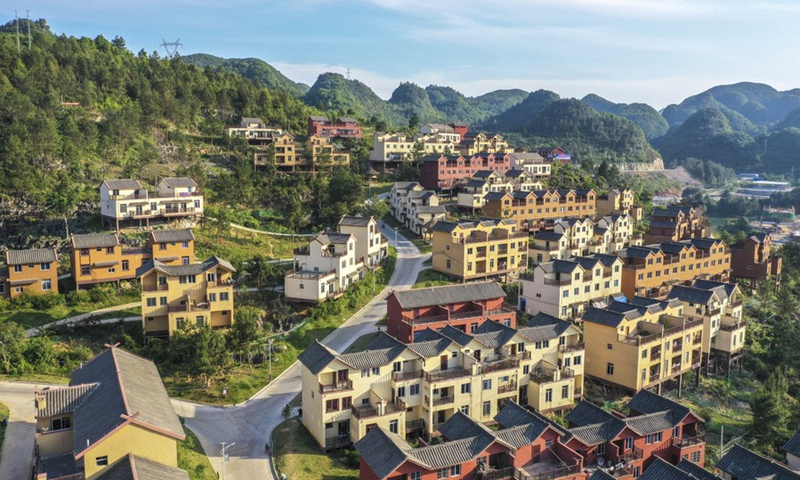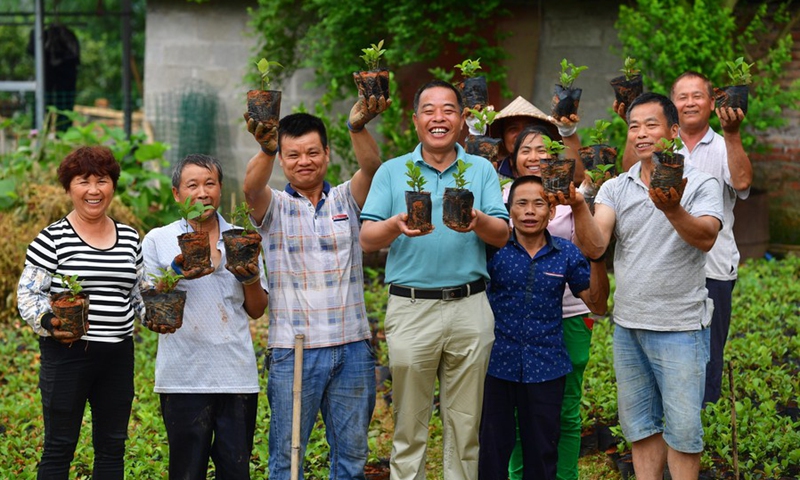
Aerial photo taken on April 28, 2020 shows a view of a poverty-relief relocation site for the Baiku Yao People in Nandan County, south China's Guangxi Zhuang Autonomous Region.(Photo: Xinhua)

Villagers of a camellia planting cooperative pose for a group photo at Gumu Village in Luzhai County of Liuzhou City, south China's Guangxi Zhuang Autonomous Region, May 10, 2020.(Photo: Xinhua)
A report on China's poverty relief experience and its global implications has stirred heated discussions at the ongoing "two sessions," as national lawmakers and political advisors explore ways to consolidate the country's poverty reduction accomplishments.
The report -- "Chinese Poverty Alleviation Studies: A Political Economy Perspective" -- released in February by New China Research, the think tank of Xinhua News Agency, offered fresh insights into poverty reduction for many other countries, and will be beneficial for guiding China's rural vitalization drive, lawmakers and political advisors said.
"China's poverty reduction practices have gone beyond existing theories in textbooks," said Li Yuncai, a national political advisor and vice chairman of the Hunan Provincial Committee of Jiusan Society, one of the eight non-Communist political parties on the Chinese mainland.
China's poverty reduction practices have showcased a political economy theory of distribution conducive to both poverty reduction and development, which aims to maintain the goal of national common prosperity by building a "pro-poor market" in which the government, market and society jointly work to emancipate the productivity of the poor and make them contributors to growth, according to the report.
The "pro-poor market" mechanism highlighted in the report offered insights into how companies can get involved in poverty reduction by developing industries, said Geng Funeng, a national lawmaker and chairman of Gooddoctor Pharmaceutical Group.
"In the past, poverty alleviation via industrial development was almost like crossing the river by feeling the stones," Geng said, adding that the company would apply the theories in the report to support rural vitalization.
Qin Yinglin, a national lawmaker and chairman of Muyuan Foods, one of China's largest hog producers, said that the company has been adopting the "pro-poor market" mechanism to achieve development while helping the impoverished at the same time.
Over the last eight years, China's final 98.99 million impoverished rural residents living under the current poverty line had all been lifted out of poverty. The country has met the poverty eradication target set out in the United Nations' 2030 Agenda for Sustainable Development 10 years ahead of schedule.
